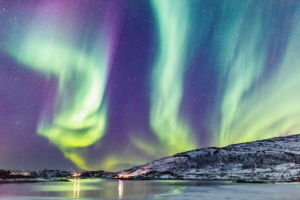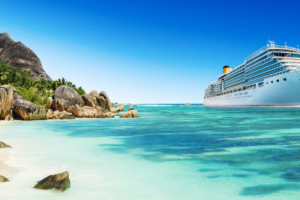Whether you’re exploring Mexico vacation packages or considering roughing it on a shoestring budget up the Baja coast, Mexico is the ideal place for cost-effective travel and beautiful scenery. Of course, you have your Mexico vacation staples: the Mayan ruins, the Frida Kahlo museum, Copper Canyon, Plaza Garibaldi. But there are still quite a few hidden gems of Mexico that will enhance your trip. Our Superior Cruise & Travel team are huge advocates of Mexico travel, and our goal is to help you craft the perfect itinerary. Consider learning more about or adding these to the list:

Museo Subacuatico de Arte de Cancun
The Museo Subacuatico de Arte de Cancun (the Museum of Underwater Art in Cancun) was created by artist Jason deCaires Taylor in conjunction with the nearby Cancun National Park. Visitors to this site will dive underwater to see an artificial reef comprised of over 500 pieces of underwater art, and the water is shallow enough to be easily accessible (just 28 feet). Today, the site contains work from at least six different artists.
For those concerned about tampering with the underwater ecosystem, don’t fret: the artwork was placed in areas that were hit hard by tropical storms, and in desperate need of regeneration. The marine-grade cement used to create the art is ideal for coral growth. One artwork installation is “Silent Revolution,” a gathering of 450 diverse statuettes. Other installations were created using coral that had broken off in tropical storms.

Chicxulub Crater
The Chicxulub Crater in Mexico is the world’s third largest crater. The crater spans 110 miles wide and wiped out half of the Earth’s species (including dinosaurs). The crater was caused by either a comet or asteroid 65 million years ago that hit the earth with a force two million times more powerful than any man-made bomb. The impact triggered earthquakes and volcanoes around the world, and dust kicked up from the event blocked sunlight for many years.

Pet Cemetary Cenote
One of the things Mexico is most known for are their hundreds of cenotes, many of which have yet to be explored. This Pet Cemetary Cenote is an ancient system of underwater caves with its own story about Mexico history to tell. Located just outside of Tulum, this site was discovered in 1987 and has been under continual discovery ever since. At the bottom of this area lies bone remains from animals way before our time, and some we’re more familiar with.
Explorers have found the lower jawbone of a tapir (a mammal similar to a pig) the prehistoric fossilized remains of an ancient camel, and hundreds of others. Visitors to the site can see these remains still in their original position. Scientist believe that today’s “sinkhole” was once a disposal pit, which accounts for the immense amount of animal bones beneath the surface.

Museum of Pain & Tolerance
A visit to the Museum of Pain & Tolerance might be a sober one, but that’s the purpose. Designed to educate visitors on the history of immigration in Mexico City and the relationship with Jewish history, this museum is built to tell many stories. The displays detail images of the Nazi Holocaust through the eyes of Mexico. It also documents genocides that have happened around the world.
A quarter of the museum’s objects come from individuals with no direct relations to the museum; this includes a railbox car donated by Poland that was used to transport Jewish prisoners to various death camps, and utensils from concentration camps. The goal is to help visitors remember history, in hopes of not repeating it. Well worth the visit for a cultural experience, and appreciation for life.

Underwater Brine Lake
Your eyes will certainly fool you if you were to visit the Underwater Brine Lake, where an actual saltwater lake lies beneath the ocean and contains salt content up to eight times stronger than normal. Because of the high salt content, it does not mix with the seawater, and those who dive it will see a clear distinction that creates an illusion of being on land. Submarines that go into brine pools will float on its surface due to its density, bobby and creating “underwater waves”.



